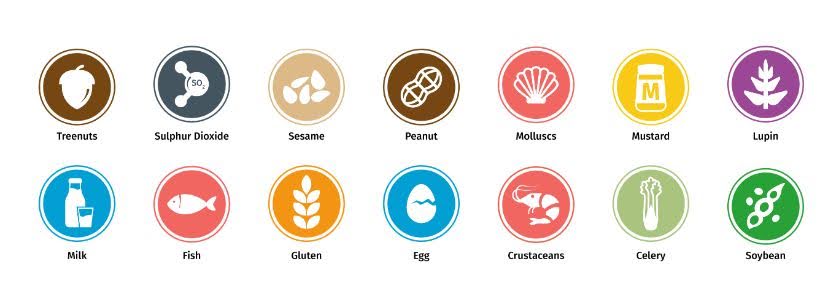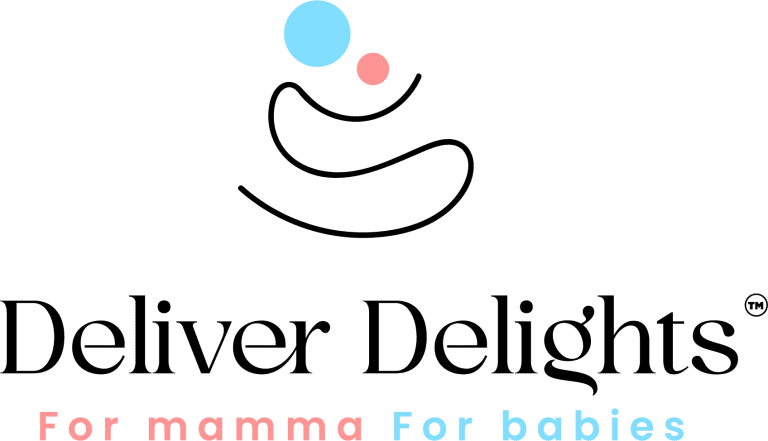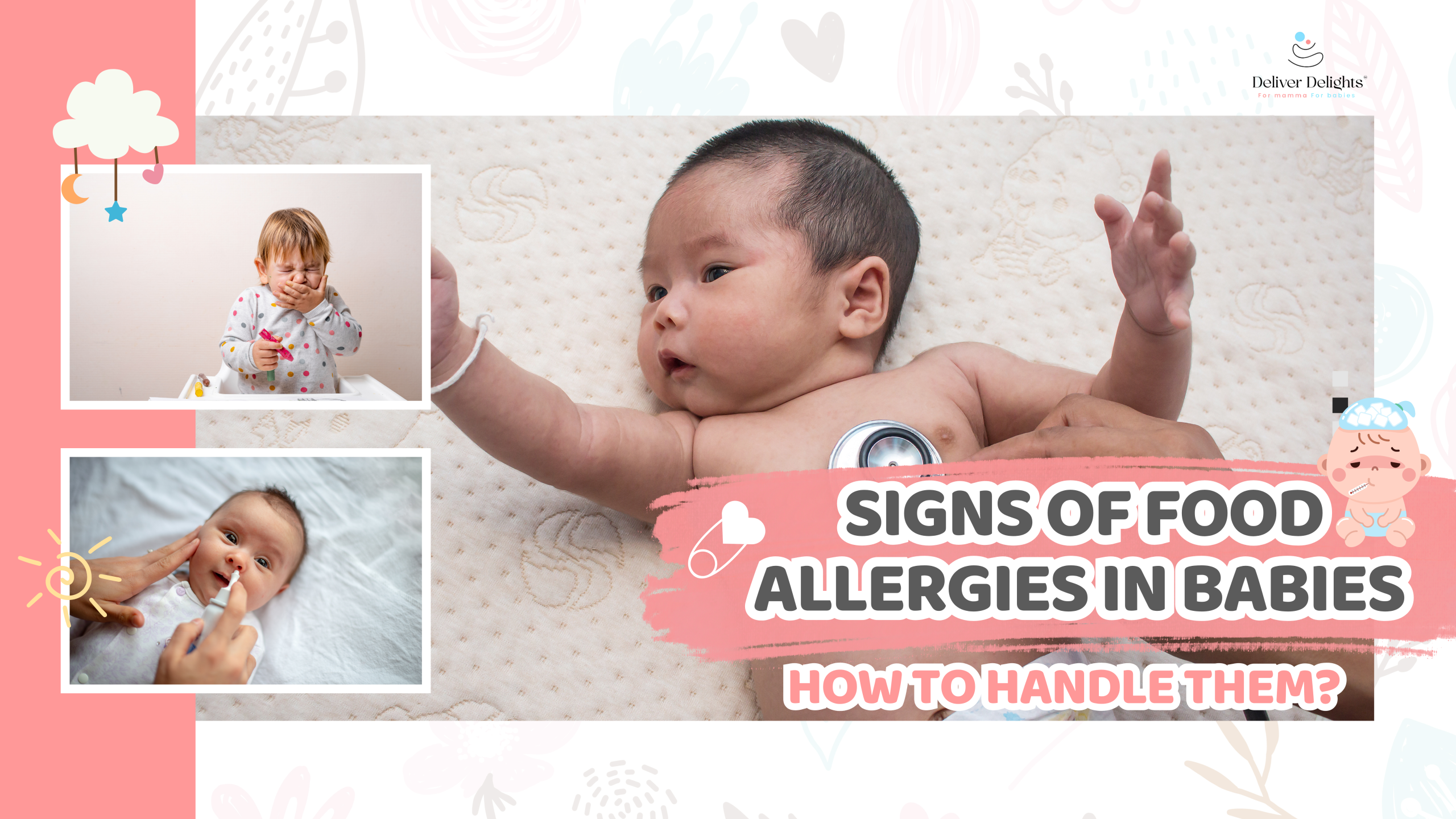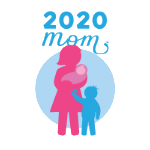Signs of Food Allergies in Babies and How to Handle Them?
Are you a new parent? Struggling to find the right food for your baby? Or
Don’t know what to serve to your sensitive baby?
We know that being a parent isn’t easy at the best of times.
We understand that family life can become complex and emotionally challenging, especially if you have a sensitive baby at home.
Conflicting advice, often given through various channels, can create a lot of additional confusion and anxiety. This is why we have developed this guide with leading specialists and me as an allergy mum. It’s been 5 years since I’ve been allergic to specific foods and the environment.
I am going to de-myth the pieces of advice, provide evidence-based information to you, so that you and your baby can enjoy the weaning times.
Can I prevent my newborn from developing food allergies?
First things first, it is recommended that babies should be exclusively breastfed for the first six months of life, however, this is not always possible as some mums find this too difficult (eg, when the baby is lactose intolerant or has cow milk protein allergy) and others choose not to.
Many settle for a combined approach to feed their infants, which suits both mother and baby. However, you choose to feed your baby, it is important to understand the following information with regards to allergy.
Breastfeeding is most important in the first days of life, as research is showing that early exposure to cow’s milk may be associated with a higher risk of cow’s milk allergy. How you choose to feed your newborn baby/infant is your decision, but make it relaxed and enjoyable for both of you.
Breastfeeding The World Health Organisation and all UK Health Departments recommend exclusive breastfeeding for around the first six months of life. Breastfeeding alone does not prevent allergies, but it has many other important benefits to the mother and child.
Breastfeeding should continue throughout the first year of life. Don’t avoid eating any particular foods (such as peanut or dairy) while breastfeeding, as it has not been shown to prevent allergies.
Formula feeding: Infant formula is the only suitable alternative to breast milk when your baby is under 12 months of age. Infant formulas made from cow’s and goat’s milk are suitable, however, soy-based infant formula should not be used unless prescribed.
However, please note that none of these alternatives have consistently been shown to prevent food allergy or another allergic disease.
The advice for introducing solids to low-risk babies:
If your baby is low risk, introduce solid foods from around six months of age, including allergenic foods such as egg and peanut. From six months, you can follow the baby-led weaning approach, purées, or a combination of both. Both can be started together.r
Can I get my baby tested before we start weaning?
Allergy testing can help identify individual babies at higher risk of food allergy. If you want your baby to be tested for allergy before introducing them to foods like egg and peanut, you need to consider whether the delayed introduction to these foods (e.g. due to waiting for an appointment) could increase the risk of developing an allergy .
If you think your baby has a higher risk of developing an allergic reaction, then talk to your health visitor or GP.
What else should I be aware of?
If you notice your baby has patches of dry skin that become red and inflamed, you should ask your health visitor or GP for advice on how to manage and treat this.
If your baby has a sibling with peanut allergy, the younger baby has a slightly increased risk of peanut allergy (approximately one in 12 risks rather than one in 50 risk. There is less than a 10% chance that they will have a peanut allergy
Our Annaprashan weekly meal planner can help you track your weaning journey.
Symptoms of mild allergic reactions:
Mild symptoms of an allergic reaction can include ONE of the following (more than one would constitute a more severe reaction):
Itchy or runny nose, sneezing
Itchy mouth
A few isolated hives, mild itching
Mild nausea or gastrointestinal discomfort, or a single episode of vomiting
If you note any of the above symptoms, stop feeding the allergen and contact your pediatrician, family practitioner, or allergist for guidance.


Minor Symptoms of Allergies
Symptoms of severe allergic reactions in babies:
- More severe reactions may include any of the following, either alone or in combination:
- Shortness of breath, wheezing, repetitive cough
- Pale, ashen or bluish skin
- Swelling of the face, lips, or tongue
- Widespread hives on the body
- Repetitive vomiting or diarrhea
- Sudden tiredness/lethargy/seeming limp
If your child is having any of the above symptoms, call local emergency services immediately


Major symptoms of allergies Tips for introducing allergenic foods:
1. Eggs
Egg white and yolk. Choose fresh, in-date, organic eggs. You can offer your baby scrambled, soft, or hard-boiled egg, or perhaps in the form of an omelette strip .
You can also mash eggs into other puréed foods like fruit, vegetables, yoghurt, or baby rice. Aim for at least one egg over a week.
2. Wheat
Wheat based similar breakfast cereals, preferably homemade, well cooked pasta shapes, toast fingers can be served to babies from 9 months to 12 months preferably due to the immaturity of their tiny digestive systems.
3. Fish
Fish and seafood puréed, flaked, or mashed, cooked fish such as cod, haddock, salmon, tilapia, sole, or trout, or seafood such as prawns or crab( considering all cultures and food preferences)
4. Tree nut
Use smooth nut butters or grind whole nuts (e.g., almond and cashew) to a fine powder and mix with fruits, vegetables, yoghurt, or baby cereals.
5. Peanut
Use smooth peanut butter or grind whole peanuts to a fine powder and mix with fruits, vegetables, yoghurt, or baby cereals. You could also add to your baby’s milk. Aim for a total of two teaspoons per week.
6. Seeds
Hummus (houmous) (which contains sesame paste, tahini) or crushed seeds added to foods like yoghurt or puréed fruit.
7. Cow’s milk
Yoghurt & Cottage Cheese. Add fresh or stored milk to meals like mashed potatoes or sauces, porridges, or pancakes
IMPORTANT: Never give whole nuts, coarsely chopped nuts, or chunks of nut/peanut butter to children under five years of age as these are a choking risk.

14 Allergens
Let me help you with the tried and tested major allergen substitutes.
1. Egg Allergy –
In baking, eggs can be substituted with banana, apple purees, buttermilk, chia seeds, and flaxseeds mixed with water. Yes, Fun foods are equally good for sensitive babies as for normal ones.
2. Cow Milk Allergy
Almond milk, coconut milk, and stored or fresh breastmilk can be used as a substitute while cooking porridges, cereals, or puddings. Don’t cook the item with milk, add it in the end when cooking is done.
3. Wheat or Celiac Allergy
You can use rice flour, polenta, rice noodles, soya flour, quinoa, millets, ground almonds, and oats to make your preparations delicious.s
I’m nervous about introducing solid foods. How do I make it an enjoyable experience for me and my baby?
It’s not unusual for parents to feel anxious when it comes to weaning their babies. Where do I start? What about finger foods? How do I prevent my baby from choking?
Combine those normal parental worries with a baby at higher risk of developing food allergies, and the process of weaning can seem quite frightening.
It doesn’t have to be so scary, and actually, making foods and mealtimes fun can make a really big difference to how well your little one takes to solids and the process of eating.
There are so many ways to make the weaning experience fun for BOTH you and your baby.
First, try to boost your confidence by doing a little reading around the topic; know the basics and try to get together a few helpful pieces of equipment to get you on your way.
When you’re ready to start your weaning journey, try out some of these tips below to keep those mealtimes enjoyable for you and your baby:
- Eat together: Sit together and eat with your little one as much as possible – they will learn so much and enjoy it so much more if you’re part of the mealtime with them. Find a routine. Get into a routine around mealtimes so that your little one knows when to expect solid foods and can get ready for them. Predictable meal times are less fussy and happier.
- Find a routine: Get into a routine around mealtimes so that your little one knows when to expect solid foods and can get ready for them.
- Create a relaxing environment: Try putting some calming music on in the background before you pop the baby in the high chair, so you’re instantly establishing a calm and relaxed environment.
- Offer variety: Try to offer plenty of variety on the baby’s plate after those first tastes. This helps expose the baby to a variety of colours, tastes, and textures and helps keep the weaning journey exciting. Late introductions of foods lead to allergies
- Let them explore: Avoid putting lots of pressure on them to ‘eat up’ and instead allow them to play with and explore the foods in front of them. All of this helps to build familiarity with food, which has been shown in research to increase acceptance.
- Make mealtime quality time: Take away distractions at mealtimes and focus on it being a time for just you and your baby – they will appreciate the quality time and attention you have to offer them, and they’ll soon learn to associate mealtimes with quality family time too.
- Stay calm: Try to stay relaxed and calm at mealtimes, even if you don’t feel it’s going well. The more the baby sees you relaxed and happy, the more they will emulate that themselves. Bring Love to the table, not fear and doubt
- Make it fun: Try introducing funky plates, cutlery, and tablecloths for your baby to keep their interest in mealtimes, and don’t be afraid to take them alfresco in the summer and get them involved in mini picnics with family and friends.
When choosing plates and cutlery, if your baby has a food allergy, check what the cutlery is made of; for example, some bamboo products are made from maize fibres.
The psychological impacts of weaning a baby with food allergy can be difficult to manage for parents and caregivers. For example, when a child develops food aversions or when parents are feeling isolated, the child too becomes anxious at mealtimes.
Read here for more understanding
Your job is to be well prepared with the knowledge and support you need to begin the next leg of your early motherhood journey with ease and grace. This is exactly what we do in our Annaprashan program. We do understand every little concern of a new parent and support them with gentle empowerment through our long-term weaning programs.
Know more here:
Ask in the comments if any questions popped up while reading this article. I will be happy to help.
Love.💙







